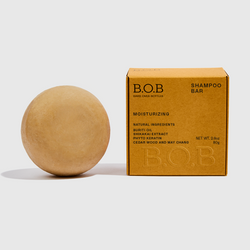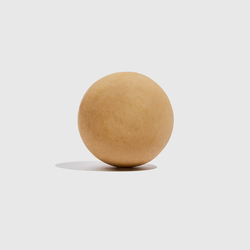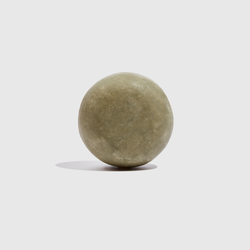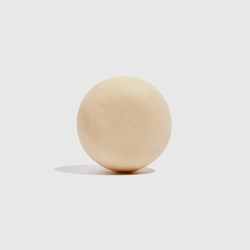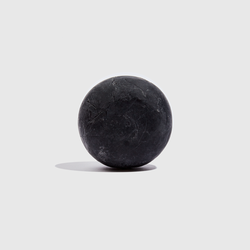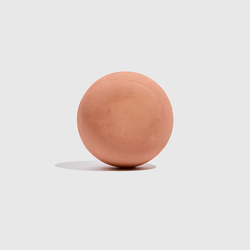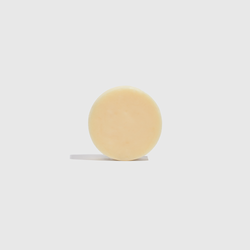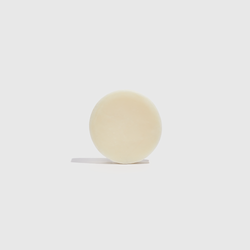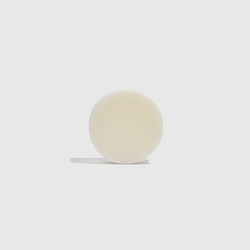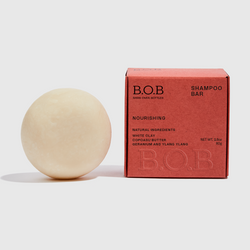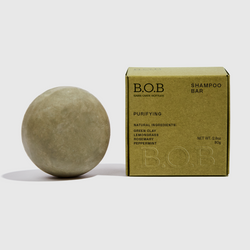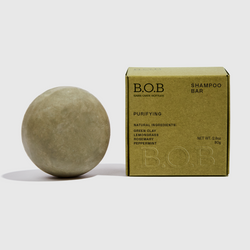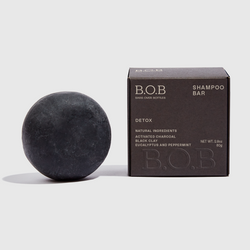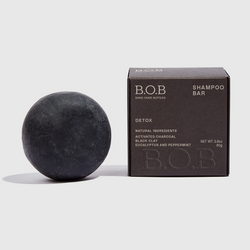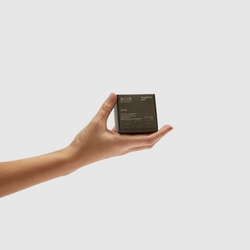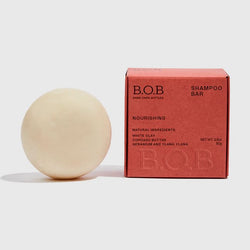What is hair transition? Discover how to do it, hair care schedule, and more!
Index:
-
What is hair transition?
-
How long does the transition process take?
-
What's the best way to speed up the transition?
-
The "Big Chop"
-
How to do hair transition?
-
Haircare Schedule
-
Can you straighten your hair during the transition?
-
How to define your curls?
-
Introducing Bars Over Bottles’s Curl Defining Bundle
Our lives are filled with phases, and what better than a change in appearance to accompany these periods, right? It's a way of conveying to the world our new moment and the transformations we are going through.
A change that many women have embraced in their lives and appearance concerns their own beauty concepts. Old aesthetic standards that dictated the rules are being questioned, leading to a movement of personal acceptance that is becoming stronger and stronger.
One of the manifestations of this acceptance is hair transition: a phase in which you abandon all chemical or physical processes that alter the natural appearance of your hair, letting your hair be as they naturally are.
If you're also in the phase of wanting to return to your original look, it's time to learn everything about the subject: what hair transition is, how to do hair transition, and what are the best products for hair transition. Let's get started?
What is hair transition?
The name might sound a bit complicated, but the meaning is actually quite simple: hair transition is that period in which you refrain from any type of chemical procedure on your hair, allowing it to grow in its natural state.
In theory, you just need to stop the chemical procedures and let your hair grow back the way it was before, with curls or waves, without undergoing straightening or blowouts.

Of course, hair transition affects you not only in the literal sense (your hair transforms), but also subjectively, altering the way you see, accept, and value yourself.
You can be sure that at the end of the hair transition, it won't just be your hair that's completely different.
How long does the transition process take?
Each hair grows at its own pace, and since we're talking about acceptance, it's important to have understanding and patience even at this stage.
The rate of hair growth is determined genetically and can be influenced by various factors: age, hair type, history of chemicals applied to the hair over time, and even a person's nutritional diet.
It's estimated that women's hair grows at an average rate of 1.2 centimeters per month, but the curl pattern can influence the perception of this growth. There are 4 hair profiles, and type 2 hair (wavy) might show its growth more visibly than type 3 (curly) or type 4 (coily) hair, for example. However, this doesn't mean that curly and coily hair isn't growing at the same rate – they just appear to be slower.
Another important point: you define when your hair transition begins and ends. As we'll see next, the end of this process can be established either gradually, with small regular trims that gradually eliminate the straightened ends, or more drastically, with a big radical cut that leaves behind all traces of the straightened phase.
What's the best way to speed up the hair transition?
We've seen that hair transition is all about embracing a more natural approach to hair care. Therefore, it's not a good idea to resort to miraculous techniques to accelerate hair growth, especially if they involve harmful chemicals or physical processes applied to your hair. Avoid tightly pulling your hair into braids or ponytails excessively, for example. This can have the opposite effect and lead to hair breakage.

The tip is to rely on natural ways to stimulate hair growth, such as maintaining a diet rich in proteins and vitamins, and paying attention to scalp health. With a consistent growth rate, sooner than you think, the natural hair length will become more visible compared to the straightened portion. With some strategic trims and a bit of patience, your original look will be back!
For those who are more eager, there are more drastic solutions: yes, we're talking about the option of simply cutting off all the straightened hair and essentially starting from scratch. This technique even has a special name: it's the famous Big Chop.
The "Big Chop"
One of the approaches to hair transition involves doing the Big Chop.
Basically, the Big Chop means cutting the chemically straightened parts of your hair all at once. It's a well-known – and faster – method to get rid of the straightened ends, and many women choose this solution to accelerate their hair transition.
The Big Chop is a bolder alternative, resulting in a much more impactful change in appearance by letting go of all the straightened hair and embracing a shorter hairstyle. Therefore, it's important to remember: going for the Big Chop should be a well-thought-out decision and is far from being a mandatory solution for those in the process of hair transition.
How to do hair transition?
In reality, there's no big secret to how to do hair transition: it happens naturally, and it's your own hair that undergoes the visual change.
Of course, there are some tips on what to do to not hinder or complicate their work. Here are some:
- Goodbye, chemicals: simply stop applying any product or technique that alters the natural shape of your hair, such as the famous keratin treatment, relaxers, and henna (a commonly used cosmetic for straightening and coloring hair).
- Easy on flat irons and blow dryers: excessive use can hinder the growth of new hair.
- Gentle combing: dealing with two different textures on the same strand can be challenging when detangling and combing your hair, so take your time and be gentle. Choosing the right comb and using a leave-in conditioner can help with the task and prevent hair breakage.
- Special care: maintain a balanced diet rich in nutrients that promote hair health and follow a care routine that includes hydration, nutrition, and restoration during the hair transition phase – the famous Hair Care Schedule.
Haircare Schedule
That's right: there's a recommended hair care schedule for those in the process of hair transition, and its aim is to prepare your hair as best as possible for this new phase.
What often happens is that hair going through the transition phase might suffer from lack of nutrition and weakness, becoming brittle and slowing down their natural growth rate. That's why the hair care schedule involves a weekly calendar of specific hair care actions aimed at strengthening your hair. It consists of three basic actions: hydration, nutrition, and reconstruction.

Hydration aims to replenish water and nutrients in your hair. Nutrition aims to create a lipid barrier in the hair fiber, keeping them hydrated, soft, and shiny. Lastly, the reconstruction step restores the lost keratin due to the chemicals over time, strengthening the hair and preventing weakening.
Week 1-2: Assess and Prepare
Assess current hair condition.
Use clarifying shampoo.
Begin weekly deep conditioning.
Week 3-4: Moisture and Hydration
Continue deep conditioning weekly.
Add a leave-in conditioner.
Switch to sulfate-free shampoo.
Week 5-6: Minimize Heat and Manipulation
Minimize heat styling.
Use heat protectant if necessary.
Consider a trim to remove damage.
Week 7-8: Gentle Handling
Maintain protective styles.
Limit combing and brushing.
Incorporate scalp massages.
Week 9-10: Nourish and Strengthen
Add protein treatment every two weeks.
Maintain a balanced diet.
Continue protective styles.
Week 11-12: Monitor Progress
Assess hair's progress.
Continue deep conditioning and protein treatments.
Consider consulting a stylist.
Week 13-14: Maintain Healthy Habits
Stay consistent with your routine.
Be patient and positive.
Celebrate your progress.
Remember to adjust the schedule based on your hair's unique needs and be patient during your natural hair transition journey.
Can you straighten your hair during the transition?
Simple answers like yes or no don't fit when it comes to hair transition. Because it's an extremely personal process, each person should establish their own boundaries to avoid frustration along the way.
For instance, using flat irons and blow dryers during the hair transition phase is not recommended, precisely because this action can damage or weaken hair that is already fragile and seeking strength.
However, many women might feel more confident using these tools to mitigate the difference in textures between the roots and the straightened portions of the hair. If using them helps them stay committed to their purpose, there's no reason to prevent them from doing so.
In any case, the advice we gave a few paragraphs above still applies: use flat irons and blow dryers only when necessary and always with caution, avoiding excess. Avoid using the flat iron on the same section of hair more than three times, and if possible, use a heat protectant on your hair.
How to define your curls?
Is the natural curl pattern of your hair starting to reappear, and can you even recognize some curls forming? Congratulations, that's a sign that your hair is leaving the chemical treatments behind and returning to its true form! The good news is that you can rely on certain techniques and specific products formulated to enhance the formation and definition of your curls.

Some women opt for finishing and texturizing techniques that help disguise the straightened portion of the hair, providing a look more similar to the natural part of the hair. Some procedures and accessories used in this process include: flexi rods, mini buns, finger coiling (securing with bobby pins), and the "finger combing" technique, which involves dividing the hair into "ribbons" about 2 cm wide and using hand movements along the strands, similar to how you'd curl ribbon for gift wrapping, to achieve charming curls.
Others might prefer to stimulate the emergence of curls and waves solely through the use of products designed for this purpose, such as curl activators and creams with gel or jelly. But these solutions can weigh down the hair if used incorrectly, as they tend to attach to the hair structure and can accumulate on the scalp, leaving residues.
More natural alternatives, such as shampoos and conditioners that offer cleaning and care while stimulating the natural curl patterns of the hair, can be a good choice for those in the transition phase who also want some assistance with their hair care schedule. This is the case with the Bars Over Bottles’s Curl Defining Bundle, for example.
Introducing Bars Over Bottles’s Curl Defining Bundle
Working together, the Moisturizing Shampoo and the Curl Definer & Leave-In Conditioner from Bars Over Bottles are a natural and effective option to accompany you during your hair transition and also after the end of this special self-discovery process.
Here's something great: both of these products are natural, vegan, produced without any animal cruelty, and 100% plastic-free thanks to their innovative solid bar format, eliminating the need for bottles and jars and helping reduce plastic waste generation and disposal.
The incredible natural ingredients present in the Bars Over Bottles’s Curl Defining Bundle are worth highlighting, and they're perfect for your hair care schedule. Imagine taking care of your hair's new phase using Phyto Keratin, Buriti Oil, Pracaxi Oil, Murumuru Butter, Shikakai, Cedarwood Essential Oil, Mango Butter, and May Chang Essential Oil? You and your curls will love it!
Bars Over Bottles’s Moisturizing Shampoo begins your hair care routine by cleansing the scalp and boosting hair hydration, ensuring healthy and nourished hair from the roots, thanks to the combination of Buriti and Pracaxi oils. Murumuru Butter complements the hydration, helping to reduce frizz and split ends.
The Curl Definer & Leave-In Conditioner is a "two-in-one" formula designed to be used during and after your shower, as both a conditioner and a leave-in product. Phyto Keratin and Mango Butter, deep conditioning ingredients, revitalize dry hair and manage volume, defining the curls and eliminating frizz. When combined with Pracaxi and Buriti Oil, they provide even deeper hydration and, as a bonus, boost hair shine.
With this duo in action, your hair transition gains more health and sustainability! After all, since you're changing and embracing a more natural look, why not make your shower routine more conscious and natural as well?




